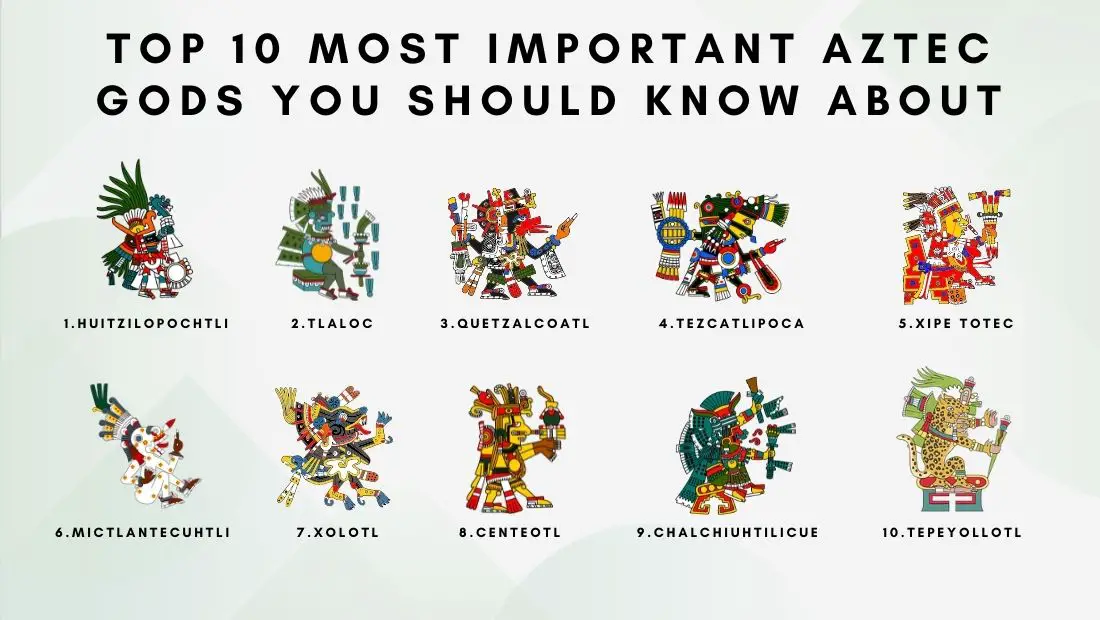Ancient civilizations often have complex belief systems and much like other cultures around the world, the Aztec people had their own pantheon of gods and goddesses.
Their gods were a major part of their society. It is really intriguing to learn about how they worshipped and revered different deities that they felt were responsible for controlling various natural forces and human events, granting them much power over everyday life in the pre-Columbian period.
With that said, take a look at this list of 10 Aztec gods and what they represent, as well as some lesser-known facts about them.
In Aztec culture, gods and goddesses were a central part of the people’s rituals. The Aztecs believed in a complex and diverse pantheon of gods and goddesses. Some tribes venerated their own specific deities but most worshiped either Huitzilopochtli,Tezcatlipoca or Tlaloc.
Huitzilopochtli – God of the Sun and War
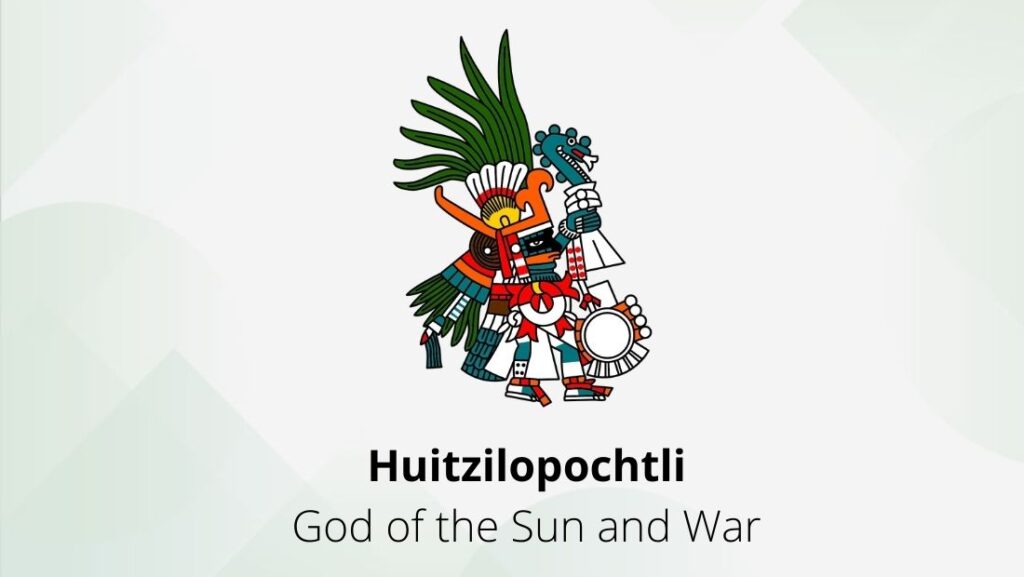
Huitzilopochtli was the Aztec god of the sun and war often depicted as wearing a hummingbird headdress.. He was one of the most important gods in the Aztec pantheon and was often invoked by warriors before battle.
Huitzilopochtli’s name means “Hummingbird of the south” and he was depicted as a hummingbird or an eagle warrior. He was the son of the two chief gods, Ometecuhtli and Omecihuatl also known as Tōnacātēcuhtli and Tonacacihuatl.
The Aztecs constructed the Templo Mayor in the Aztec capital of Tenochtitlanand, which was the main temple of the aztec people where Huitzilopochtli was worshipped along with Tlaloc. The Templo Mayor consisted of twin pyramids, one for Huitzilopochtli and one for the rain god Tlaloc.
Very often you see in movies such as Apocalypto, humans being sacrificed to the gods by the Aztecs. In the same way Aztecs sacrifised humans to Huitzilopochtli. As the god of the sun, Huitzilopochtli controlled the day-time sky and was associated with fire and light. He was also responsible for guiding the sun.
According to historians during the first three weeks of May, the Aztecs would celebrated the Festival of Toxcatl. This festival was dedicated to Huitzilopochtli. The event included dancing, prayers, and human sacrifice in order to obtain the rains necessary to water the Aztec crops for another year.
Tlaloc – God of Rain
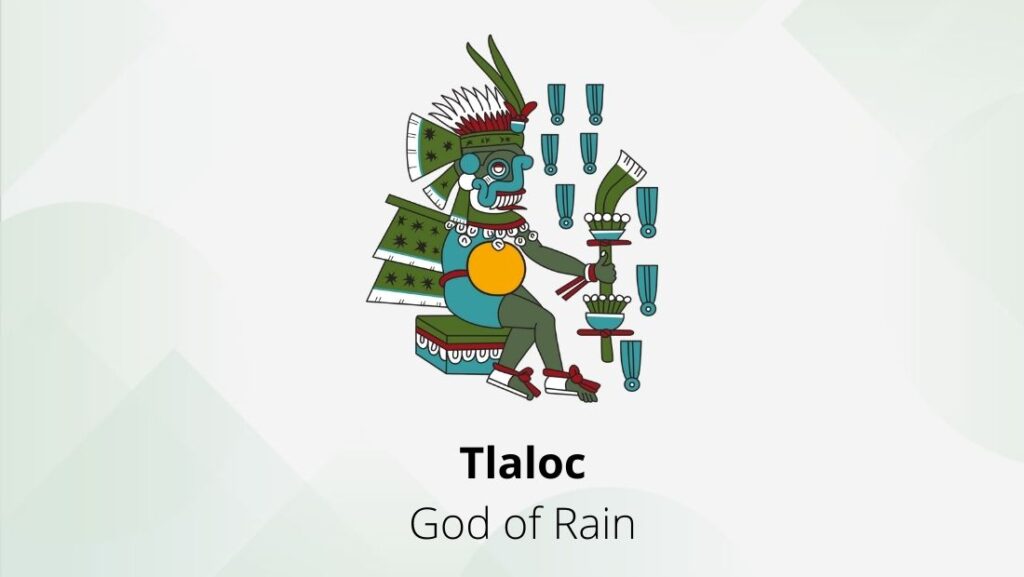
Tlaloc was the Aztec god of rain, fertility, and agriculture. Tlaloc’s name means “He Who Makes Things Sprout” and he is depicted as a man with blue skin, sporting a goatee and wearing a feathered headdress. According to popular belief he was the husband of Chalchiuhtlicue, the goddess of water, streams, rivers, seas and storms.
Tlaloc is closely associated with the colors blue and green, and is also associated with the jaguar as a symbol of ferocity and strength.
As the god of rain, Tlaloc was responsible for bringing fresh water to the Earth and ensuring that crops grew successfully. He was also associated with earthquakes and thunderstorms.
The Aztecs believed that if Tlaloc was not appeased with offerings and sacrifice he would stop the rains causing famine and the village would be infested with deadly diseases.
So in order to please him the Aztecs gave a variety of offerings which included Jaguar bones, water animal, Jade, shells and sand. But the most valuable of them all was considered to be little children. The children were made to endure significant pain as the Aztecs believed Tlaloc required the tears of the young as part of the sacrifice before their execution.
Quetzalcoatl – The Feathered Serpent God
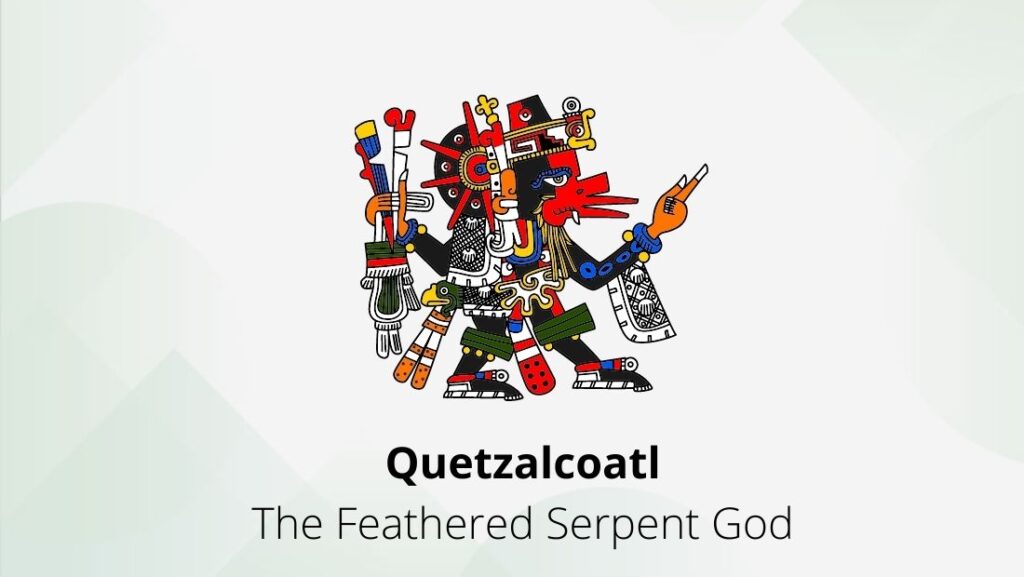
Quetzalcoatl was the Aztec god of the wind, wisdom, and knowledge.Quetzalcoatl was often depicted as a serpent or a feathered snake and his name means “Feathered Serpent”.
There is some debate over the origin of Quetzalcoatl. Some say he was a god from another culture who was adopted by the Aztecs, while others believe he was an indigenous god who was worshiped by the Aztecs from the beginning.
No matter where he came from, Quetzalcoatl soon became one of the most important gods in the Aztec pantheon. He was the god of wisdom, knowledge, and wind and was associated with the planet Venus.
According to popular belief he was responsible for creating the world and mankind. In one of the many versions of myths surrounding Quetzalcoatl, the world has been created and destroyed four times as result of fighting between the gods.
As the god of wisdom and knowledge, Quetzalcoatl was responsible for imparting knowledge to humans and helping them to understand the world around them.
Tezcatlipoca – God of Night and Magic
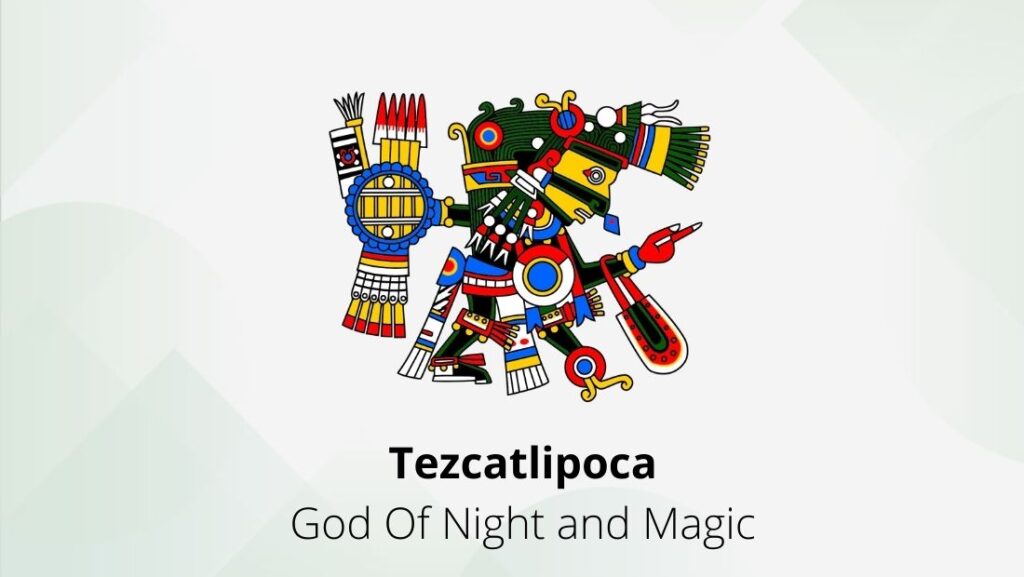
Tezcatlipoca was the Aztec god of the night, magic, and sorcery. Tezcatlipoca’s name means “Smoking Mirror” and he was depicted as a man with a black body and a smoking mirror for a face. He was the husband of the goddess Coatlicue and father of the moon god Coyolxauhqui.
As the god of night, magic, and sorcery, Tezcatlipoca was responsible for all things that happened in the dark. He was also known as the god of illusion and deception and could make people see things that weren’t actually present.
Tezcatlipoca is generally depicted with black and a yellow stripe painter on his face. With a circular disk made of obsidian, according to different myths his right foot is replaced with obsidian or a snake as it was bitten off in a battle by a creature named Tlalteotl
Many of the temples now associated with Tezcatlipoca are built facing east–west the sacred building of the war god was in direct relation with the movement of the sun, in the same manner of the Great Temple was, their façades being towards the West.
Xipe Totec – God of Fertility and Sacrifice
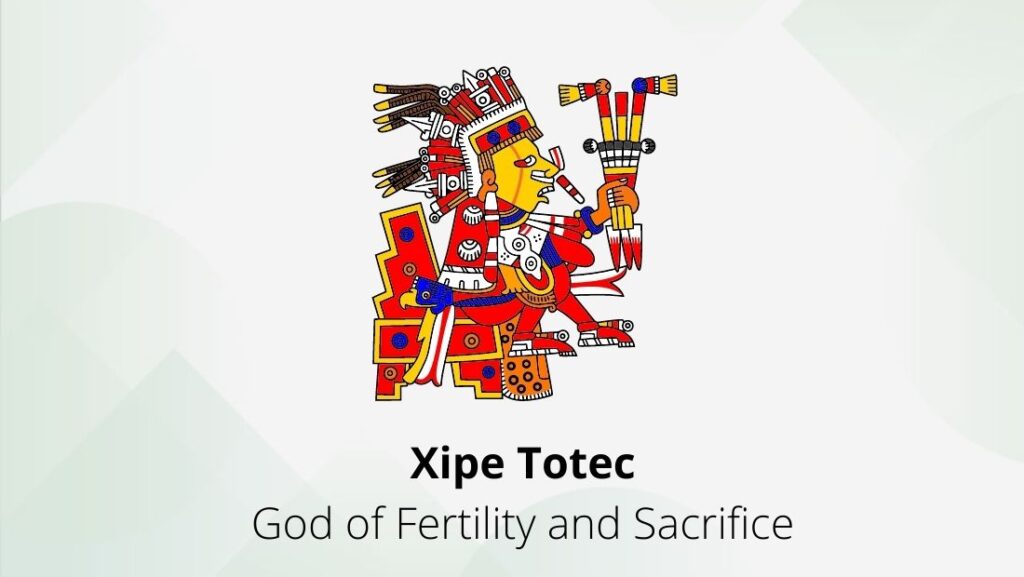
Xipe Totec was the Aztec god of agriculture, fertility, and the seasons. He was depicted as a man wearing the skin of a flayed human being.
He was also associated with death and rebirth and was said to represent the new growth that comes after the winter months. The wearing the skin of a flayed human being represented the cycle of death and rebirth that he presided over. Xipe Totec was also associated with springtime, when new life begins to grow and the earth is reborn.
The festival of Tlacaxipehualiztli was celebrated on the second month of the Aztec year to honour Xipe Totec. The gladiatorial sacrifice of war prisoners, which both began and concluded the celebration, was the main ritual action of this festival. During the celebration of Xipe Totec, gladiatorial execution of captives taken in battle was held.
A priest bound a left-handed fighter to a stone and gave him weapons with only feather ends for combat against two Eagle and two Jaguar fighters. If he succumbed to them, another right-handed warrior killed him. Dancers also performed agricultural dances
The Tlahuahuanaliztli gladiatorial fights were one of the highlights of the Tlacaxipehualiztli celebration. These entailed prisoners who had shown exceptional bravery being placed on a circular stone platform (temalacatl), bound up, and forced to fight elite Eagle and Jaguar warriors or knights.
However, there was no chance of survival as the knights were armed with the vicious macuauhuitl, a hardwood sword edged with razor-sharp obsidian, whilst the captive had a sword edged with feathers so, aside from tickling to death his opponents, the contest was a foregone conclusion and merely a more elaborate form of sacrifice than meted out to the other victims of the festival.
Mictlantecuhtli – God of Death
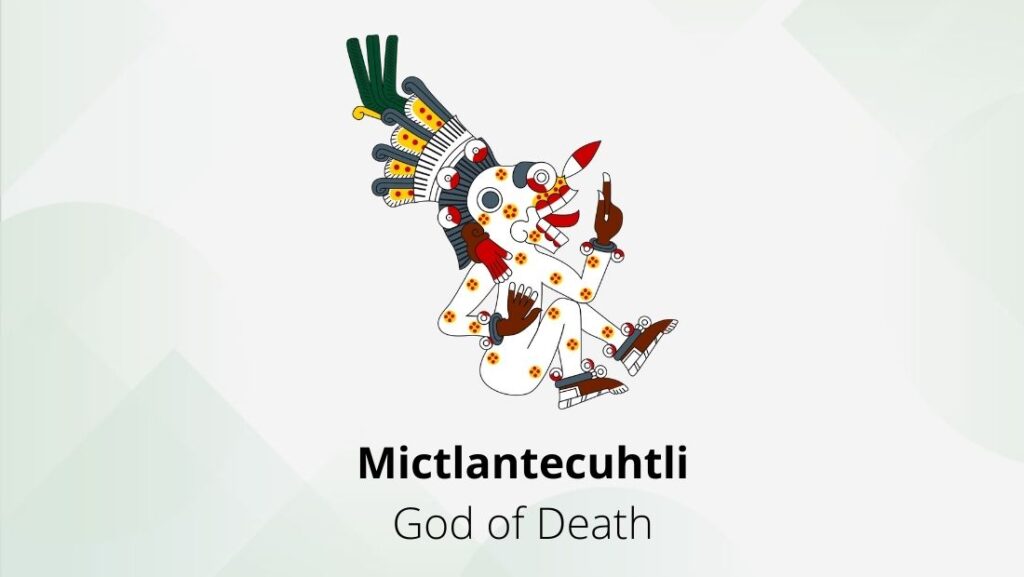
Mictlantecuhtli was amongst the most feared Aztec gods. He is the god of dead and ruler of the underworld also known as Mictlan. He is depicted as a skeletal figure with a feathered headdress. Mictlantecuhtli is associated with death, destruction, and darkness. The worship of Mictlantecuhtli sometimes involved ritual cannibalism.
This was seen as a way to absorb the strength and power of the god. Victims were often prisoners of war or slaves.
The Aztec believed that those who could not enter paradise were forced to endure a four-year journey through the nine hells of Mictlan. After they had gone throught all the trials, they reached the abode of Mictlantecuhtli.
When a person died his grave would be filled with offerings, which the Aztec believed that the dead would with them on their journey to the underworld and upon reaching Michtlan the goods would be offered to Michlantecuhtli and his wife.
Xolotl – God of Lightning and Monsters
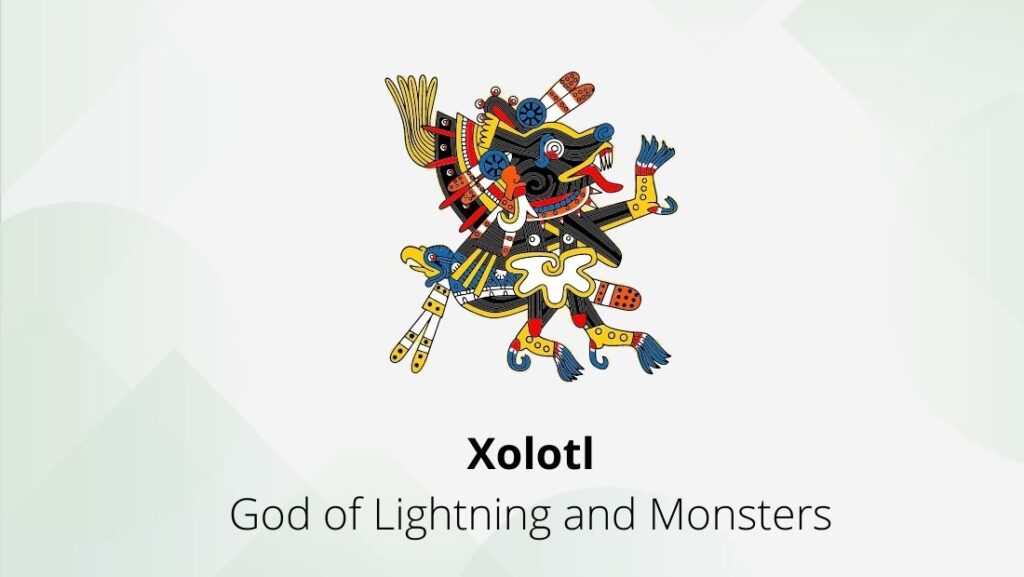
Xolotl is the god of twins, lightning, deformities and death. He was also associated with disease and physical impairment. Xolotl is often depicted as a dog-headed humanoid carrying a lightning bolt known as a Xiuhcoatl. The name “Xolotl” might be a combination of two Nahuatl words that could mean “twin” or “monster.”
Xolotl was the brother of Quetzalcoatl, and despite his deformities he married the beautiful Xochiquetzal. However, because Xolotl’s wife had an affair with another god it got him angry enough to trap her in a cave. According to some legends she eventually escaped while according to others her spirit lives on in the form of butterflies.
The Aztecs believed that Xolotl accompanies people throughout their lives as a companion but also would haunt them after death if mistreated during life. His appearance is often thought to warn individuals that change is needed or that they are close to death.
Centeotl – God of Maize
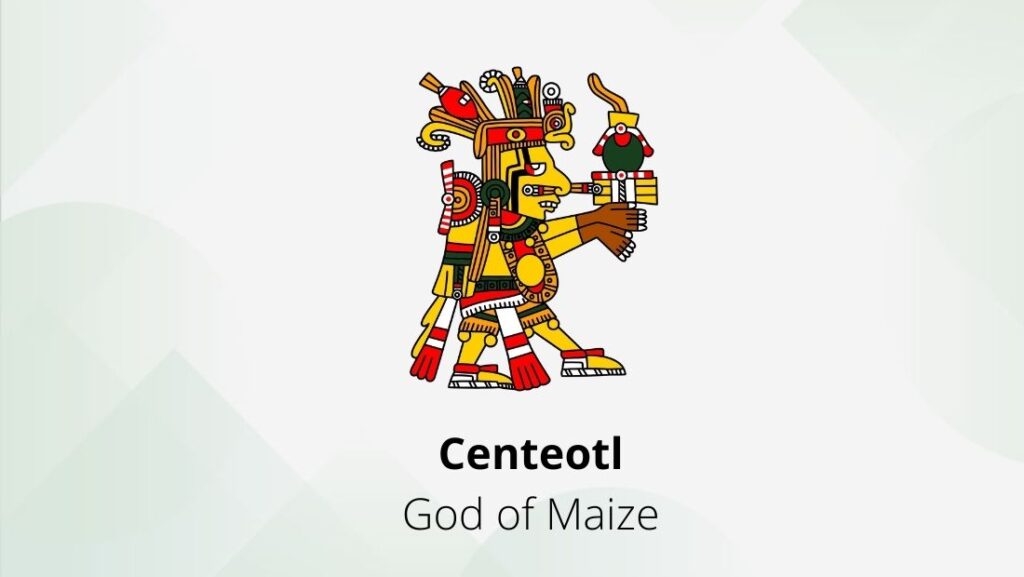
Centeotl was the god of maize, and as such he was based on a pan-Mesoamerican god shared by Olmec and Maya religions. His name means “Maize cob Lord”.
Centeotl was the son of Tlazolteotl the goddess of fertility and childbirth and of the planet Mercury Piltzintecuhtli.
The fourth month of the Aztec calendar is called Huei Tozoztli, which means “Great Feast of the Maize.” This was the month when the harvest was in full swing and the corn god was at his peak.
During this month, there were ceremonies and festivities in his honor all over Mexico.The maize god Centeotl was honored annually with a three-day festival.
On the first day, prayers were said to him and a ceremonial meal was prepared. On the second day, people gathered at the local temple to hear sermons about the maize god. On the third day, a procession went from the temple to a nearby maize field, where young boys reaped the first maize crop of the season.
In Maya religion, Centeotl was seen as the provider of life-sustaining food, and as such he played an important role in the spiritual lives of the people. Offerings of maize were made to him in order to ensure a good harvest, and he was also invoked for protection against famine.
Centeotl is still worshipped by the Maya people today, and his festivals are some of the most important in their calendar. He is considered to be the god of agriculture and fertility, and is often called upon to bring blessings to marriages and new crops. In some areas he is also worshipped as a rain god.
Centeotl is one of the most important gods in the Maya pantheon, and his influence can be seen in many aspects of their culture. He remains an important figure in Mesoamerican religion to this day, and continues to play a vital role in the lives of the people who worship him.
Chalchiuhtilicue – Godess of Water and Rivers
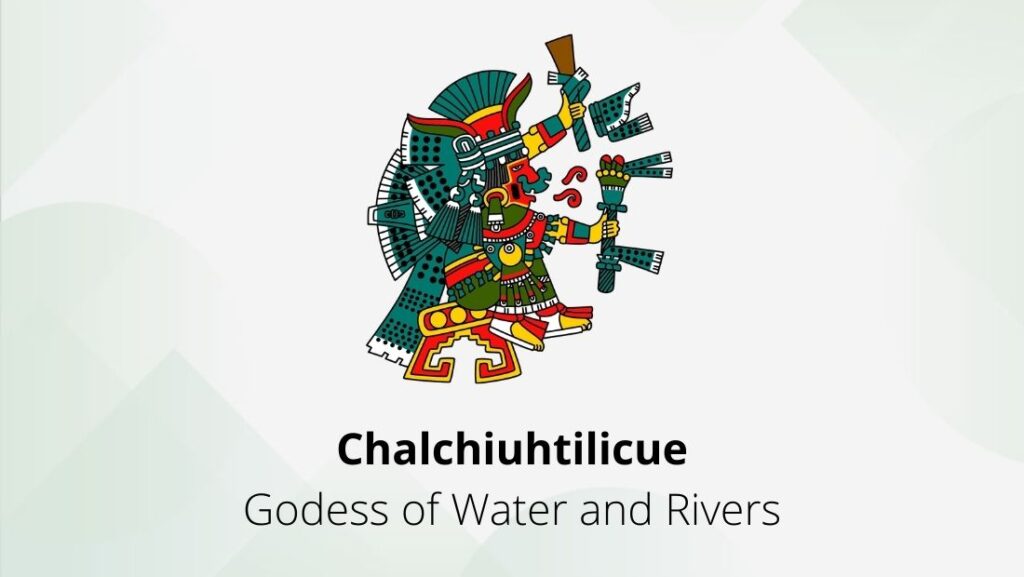
Chalchiuhtilicue is the goddess of water, rivers and lakes. She is often depicted wearing a skirt made of jade, which is why she is sometimes called ‘she of the jade skirt’. Chalchiuhtilicue is said to be very beautiful, and her powers over water make her a revered deity in many cultures.
In Aztec mythology, she is one of the most important gods, and often appears in creation myths. Some stories say that she helped create the world by mixing her blood with that of other gods.
Others say that she created rivers and lakes by using her cloak to catch the water leaking from the sky. Chalchiuhtilicue is also associated with fertility and childbirth, as well as with healing and rain.
She is often called upon to help people in these areas, and her blessings are considered to be very powerful. In some cultures, she is also seen as a bringer of death, as water can be both life-giving and destructive. Chalchiuhtilicue is an important figure in many myths and legends, and her importance is reflected in the reverence shown to her by believers.
Chalchiuhtilicue’s power over water makes her a popular deity in many cultures. She is often invoked for help with fertility, childbirth, healing and rain
Tepeyollotl – God of Earthquakes, Echoes and Jaguars
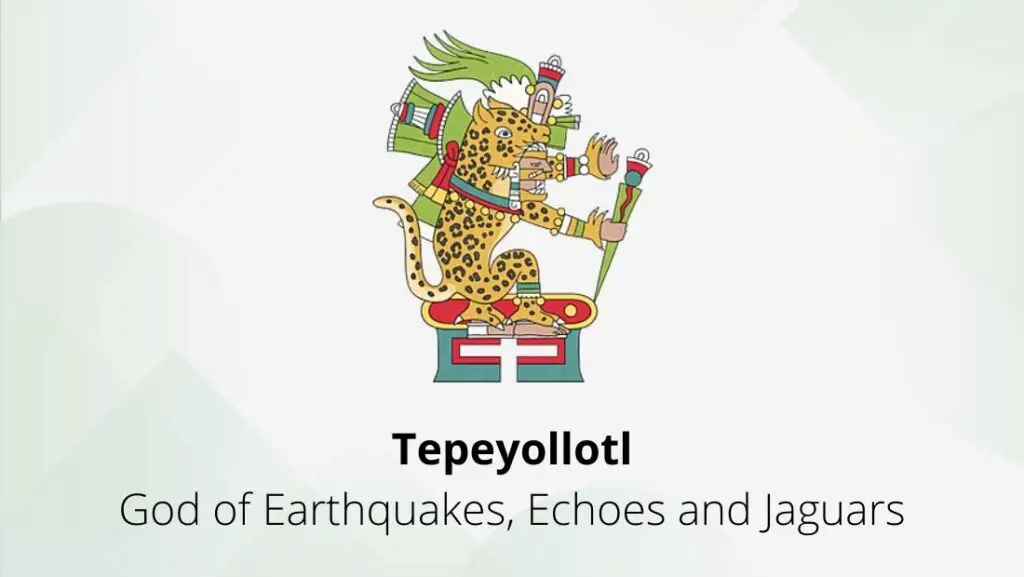
Tepeyollotl, meaning ‘mountain at the heart’, was the god of earthquakes, echoes and jaguars. He was often depicted as a man with a jaguar head, and was said to dwell in the mountains.
Tepeyollotl caused earthquakes by pounding his massive feet on the ground, and could create loud echoes by shouting. He was also associated with wild animals, particularly jaguars. In Aztec mythology, Tepeyollotl was one of the most powerful gods.

